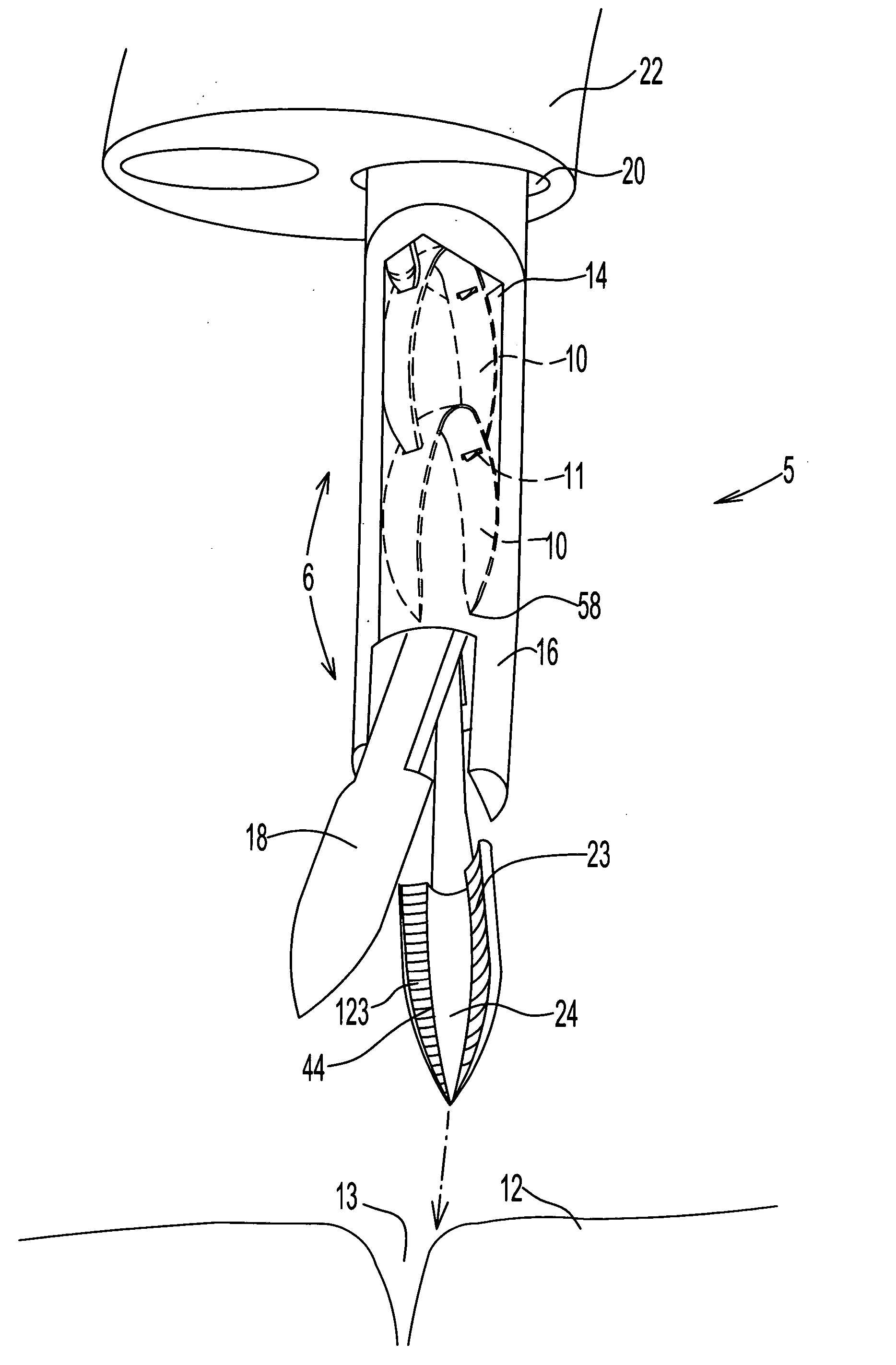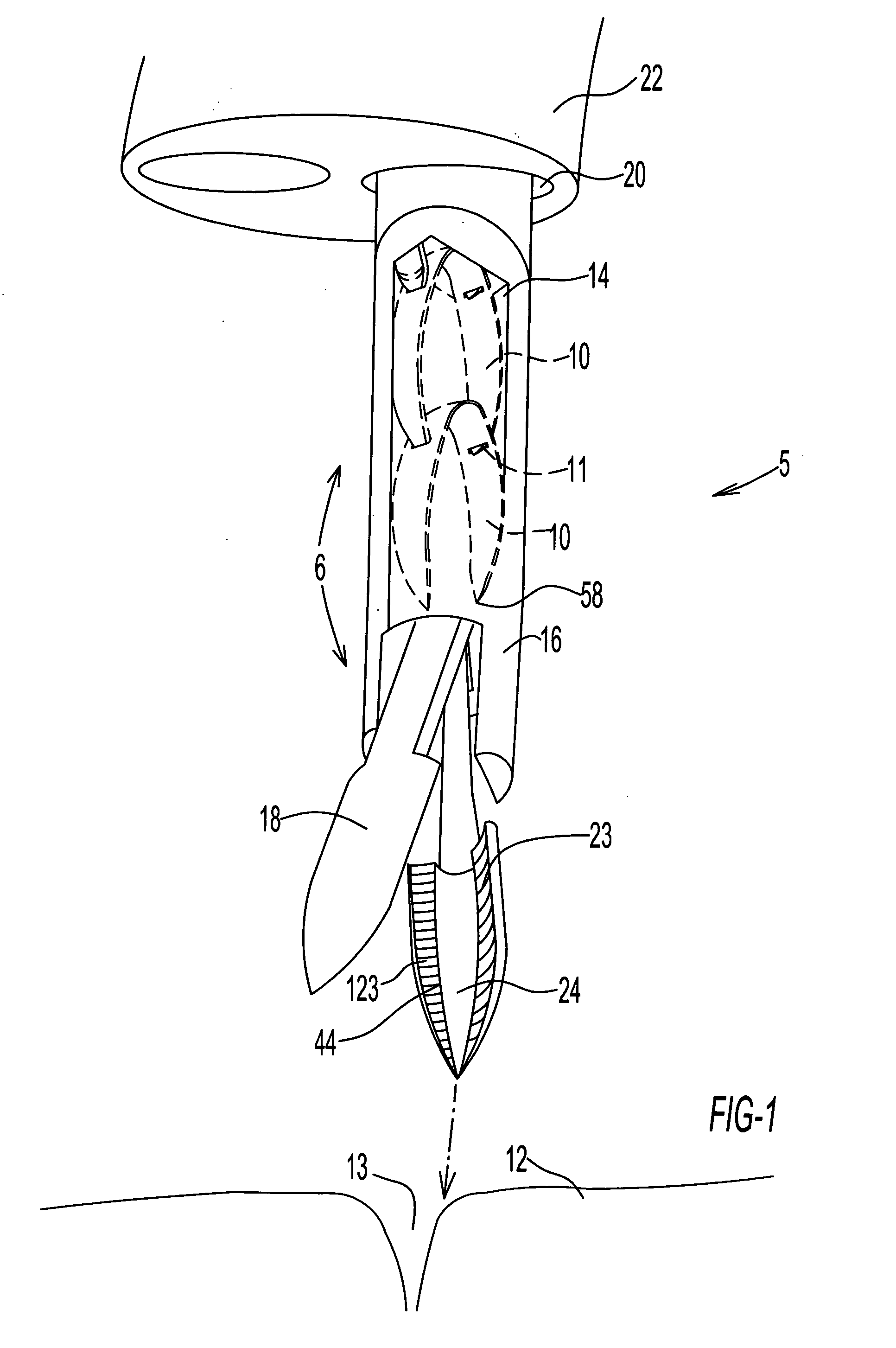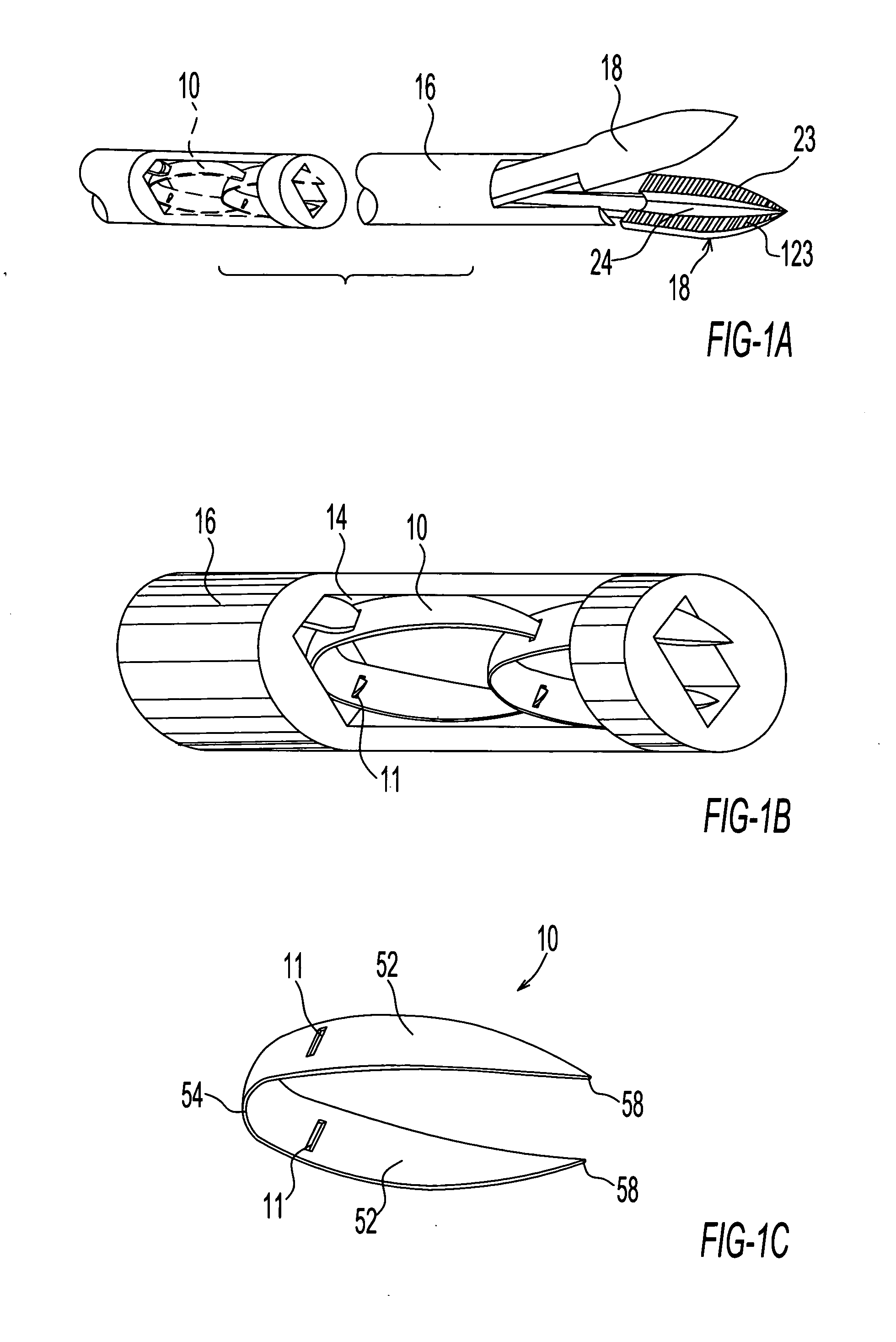Endoscopic fastening system with multiple fasteners
a technology of multiple fasteners and endoscopic fasteners, which is applied in the field of endoscopic fastening devices and surgical fasteners, can solve the problems of no reliable method for securing fasteners inside the patient's body, no such devices currently available, and the limitations of suturing operations are the sam
- Summary
- Abstract
- Description
- Claims
- Application Information
AI Technical Summary
Benefits of technology
Problems solved by technology
Method used
Image
Examples
Embodiment Construction
[0065] As illustrated in FIG. 1, an endoscopic fastening system 5 comprises one or more surgical fasteners 10 and a fastener delivery and deployment assembly 6, the assembly having a diameter sufficiently small so that it may be slidably insertable into an outer tubular member 20 in the form of a working channel extending longitudinally through an endoscope 22. The endoscopic fastening system, in one embodiment, for example, may be used in conjunction with an endoscope 22 having a working channel 20 2.8-4.2 mm in diameter and a shaft length of 230 cm.
[0066] Fastener delivery and deployment assembly 6 comprises a tubular shaft member 16, the shaft member being provided with a channel or lumen 14 extending longitudinally through the shaft member. Shaft member 16 is further provided at a distal end thereof with forceps jaws 18 configured for penetration of target tissue 12 and for closing fastener 10, as discussed further herein below. As shown in FIG. 1D, forceps jaws 18 are provided...
PUM
 Login to View More
Login to View More Abstract
Description
Claims
Application Information
 Login to View More
Login to View More - R&D
- Intellectual Property
- Life Sciences
- Materials
- Tech Scout
- Unparalleled Data Quality
- Higher Quality Content
- 60% Fewer Hallucinations
Browse by: Latest US Patents, China's latest patents, Technical Efficacy Thesaurus, Application Domain, Technology Topic, Popular Technical Reports.
© 2025 PatSnap. All rights reserved.Legal|Privacy policy|Modern Slavery Act Transparency Statement|Sitemap|About US| Contact US: help@patsnap.com



